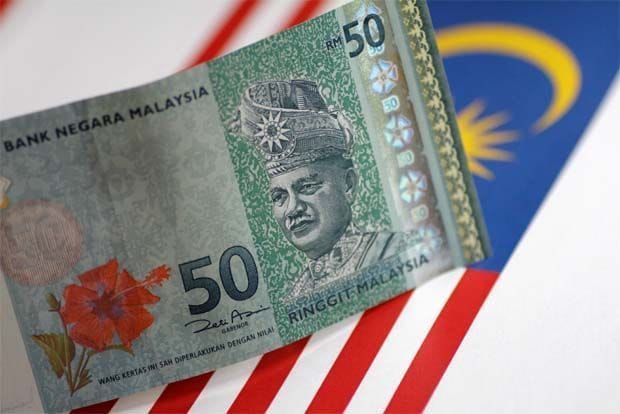The worst may be over for the ringgit

Source: The Star
PETALING JAYA: After a period of volatility and depreciation, signs are emerging for the ringgit to gradually strengthen in the coming months.
Factors such as shifting market sentiment, the United States economic conditions and proactive policy measures by Bank Negara are cited as key drivers for a more positive outlook for the local unit.
To note, the ringgit weakened to close to the 4.80 levels against the greenback in mid-April, and has since recovered to the 4.68 level at last Friday's close after tamer inflation data out of the United States raised hopes for a rate cut there later this year.
Prof Geoffrey Williams, a notable economist, is confident about the ringgit's prospects, foreseeing gradual strengthening based on stable domestic indicators.
"Attention has shifted and speculation (on the US interest rates) has eased so we expect the ringgit to strengthen slowly in the coming months based on domestic indicators of stable interest rates, slower inflation and modest but stable growth.
"A fair value for the ringgit against the US dollar by year-end would be between RM4.20 and RM4.30," he noted in a reply to StarBiz.
Echoing this sentiment, SPI Asset Management managing director Stephen Innes highlighted broader market dynamics will drive Asian currency strength, including softer US economic data and expectations of imminent rate cuts by the US Federal Reserve (Fed).
Additionally, Innes said China's plans to issue one trillion yuan in long-term debt, presumably to purchase unsold properties for affordable rentals, thereby supporting the struggling real estate sector and bolstering the overall economy, will provide support to the yuan and emerging market units like the ringgit.
"Given the softer US survey data and the significant decline in Bloomberg's Economic Surprise Index, it appears many analysts and market participants have been caught offside with their bullish US dollar predictions, expecting it to remain strong through year-end.
"This misalignment is notable, as the unsiding of long US positioning in Asia's foreign exchange and G-10 alone could drive the ringgit higher. Additionally, Malaysian exporters, who have been hoarding US dollars, might be forced to sell if the exchange rate breaks 4.65," he said.
Considering these dynamics, Innes foresees the ringgit trading through 4.60 over the summer and potentially reaching 4.50 against the greenback by year-end, especially if the Fed cuts interest rates at least twice within this period.
Reflecting on recent developments, Willaims attributed the recent strength in the ringgit to the reduced market speculation on US interest rates and strategic interventions by Bank Negara to stabilise the currency.
"Previously, the weakness of the ringgit was due to factors outside of the control of Malaysian policymakers including short-term speculation on interest rates in the US and geopolitical risks.
"The central bank's intervention to help repatriate ringgit profits from government-linked investment companies (GLICs) has helped to stem the depreciation and stabilise the ringgit against market speculation and now the ringgit has strengthened as the short-term speculation has moved on," he said.
Williams was referring to the coordinated efforts by GLICs, Malaysian corporates and businesses to repatriate funds back into the ringgit, which discussed at the Financial Markets Committee (FMC) meeting in April, aimed at increasing the value of the local unit.These efforts led to higher foreign exchange conversion activities in the onshore foreign exchange market, driven by significant flows resulting from coordinated initiatives and opportunistic selling of US dollars by specific exporters.
When asked if any further actions needed to be taken by the central bank, Williams said the current initiative is working well and hence, "there should be no pressure on Bank Negara to do anything further."
"The central bank is following a very positive and effective strategy of ensuring the exchange market function properly for ringgit trades. There is no particular reason to change this policy or take any further action under current circumstances," he added.
Innes said the Fed's "higher for longer" narrative has been the main driver of dollar strength, leaving Bank Negara in a challenging position.
"Any aggressive interventions by Bank Negara could be futile, and hiking rates in a recovering economy is not a desirable option. However, the outlook isn't entirely bleak. High commodity prices are improving Malaysia's terms of trade, which should support the ringgit," he explained.
As market focus shifts away from US inflation data and the Fed approaches its first rate cut, Innes believes the natural market forces are likely to strengthen the ringgit.
"This aligns with Bank Negara's view that the ringgit is currently undervalued. Once the US monetary policy environment becomes less aggressive, the ringgit is poised to appreciate, reflecting its true value," he concluded.
